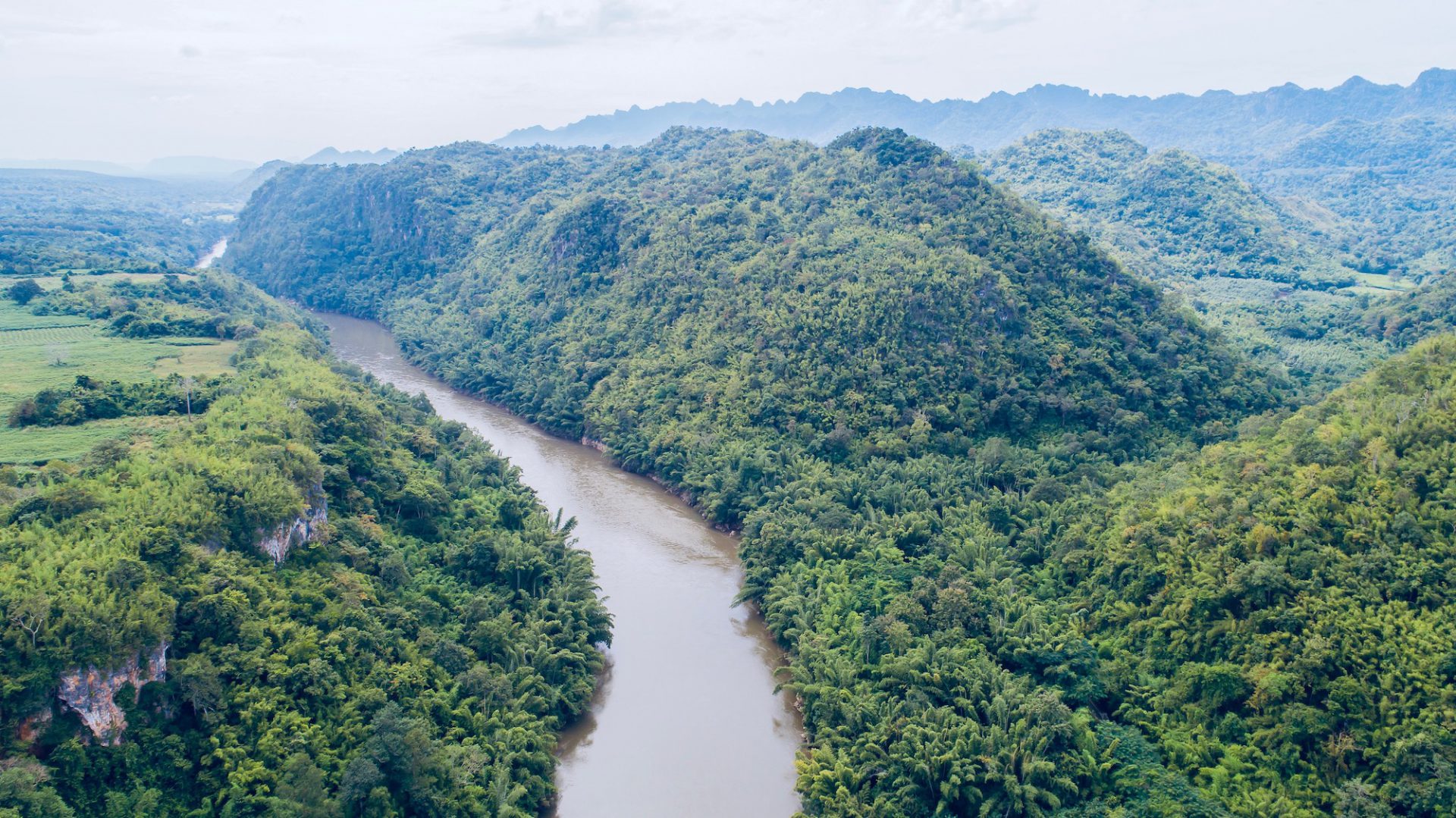

The beauty of Kanchanaburi speaks for itself. A little treasure cove of scenic splendors in Thailand remains shrouded in the mist to be explored. Nearby Attractions of tourist importance are plenty and some may be visited conveniently from River Kwai RESOTEL resort such as War Cemetery, Hellfire Pass Memorial, Art Gallery and War Museum, The famous Bridge over the River Kwai (Death Bridge), Tiger Temple, Thailand Burma Railway Centre (Museum), Lawa cave, Mon Village & Temple, Somdet Phra Sri Nakharin Park, Don Chedi Archaeological Site, Erawan waterfall, Prasat Muang Singh historical park, Saiyok Waterfall & National Park and etc.
二戰期間的,日本希望尋求縮短日本與緬甸之間的補給線,準備在英國的印度最終攻擊。日本開始從泰國通過河谷的約415公里的距離一條鐵路到緬甸工作。日本強迫大約25萬亞洲勞工和61000盟軍戰俘-的戰爭(戰俘)來構造在泰方260公里軌道,逼近三塔山口邊境。不幸的是,據估計100,000亞洲工人和16,000盟軍戰俘失去了在此期間,他們的生活因諸多因素。今天,有來自北碧府運行到終點在南托克站上這一歷史路線的距離為50公里,每天的列車。這旅程的非常有趣的事情,為遊客之一。
Lawa洞是在北碧府省最大的洞穴。這個洞穴位於葵Noi河的一側位於Siayok國家公園。入口有點窄雖然內部空間寬敞與幾個室,包括音樂室,寶座室,幕室鐘乳石和石筍的充分發揮。另外也坤吉滴,世界上最小的蝙蝠,住在山洞裡。無害化坤吉滴蝙蝠的重量只有2克,是2.5至3厘米長,具有機翼跨度為10厘米
聯繫方式: 每天從上午09點開到下午4點00分
如何到達: 75千米北碧府市。這個洞穴可以乘船或汽車進行訪問。被特許的小船是可在樸Saeng碼頭,行程45分鐘。遊客通過公路旅行可以過橋了,在班耿Raboet,繼續步行。我們的客人可以開始Resotel碼頭的旅程,然後採取山地自行車洞穴。這大約需要15分鐘。
這就是死亡鐵路的建設都埋在了6,982戰俘的遺骸死亡的地方。
聯繫方式: 每天從8時30分開放至下午六時正
如何到達: 陵園,它位於Saengchuto路(高速公路323),位於Amphur芒,火車站對面,距離TAT辦公室僅1.5公里。
在園區內,佔地550平方千米,是7層愛侶灣瀑布,是泰國最美麗的瀑布之一的網站。瀑布採取了一系列小瀑布和水池在與岩石間的形式,並且都應該是形似神因陀羅的三頭大象,所以他們的名字。
聯繫方式: 每天從8時30分開放至4時30分
如何到達: 國家公園是北碧府65公里沿路線3199.遊客可以乘坐巴士從北碧府巴士總站出發到瀑布每50分鐘,從上午8時至下午五時,全程1.5小時。
博物館是在從Office澳大利亞戰爭墳墓的,誰能夠提供有關內時代有興趣的遊客發生的鐵路和活動要求的歷史信息澳大利亞的管理。博物館也有一個劇院,顯示短視頻從一些澳大利亞前戰俘鐵路和對話的建設的戰爭鏡頭製作。
聯繫方式: 營業時間為上午9時至下午4時
如何到達: 該遺址位於一個茂密的森林近千米。 66的賽育 – 通帕蓬路(公路323號)。
The Thailand-Burma Railway Centre in an interactive museum, research and information center dedicated to presenting the story of the Thailand-Burma Railway built during the World War II.
Details: Open daily from 9 a.m. to 5 p.m.
How to get there: It is located on the western side of the main Kanchanaburi War Cemetery (Don Rak) by approximately 100 meters.
Mallika Village is an ancient village that’s been restored and maintained to its former glory – giving both locals and travellers the opportunity to experience what it was like living in ancient Siam. It’s a living museum where you get to walk around and interact with villagers (staff dressed in ancient costumes), and even play the role of villager yourself. Visitors can rent the ancient costumes and most Thai visitors do, so as you walk around and encounter these ‘villagers’, you’ll really feel as if you’ve travelled back in time.